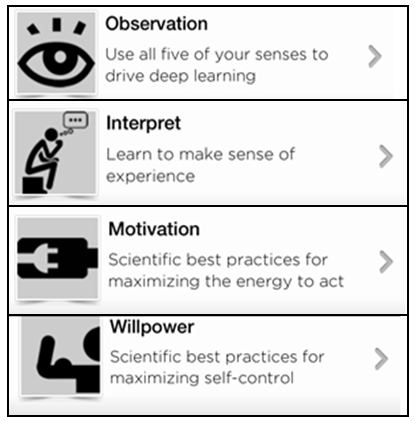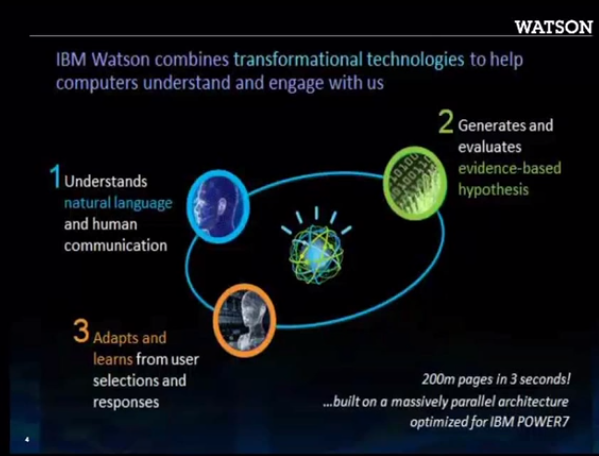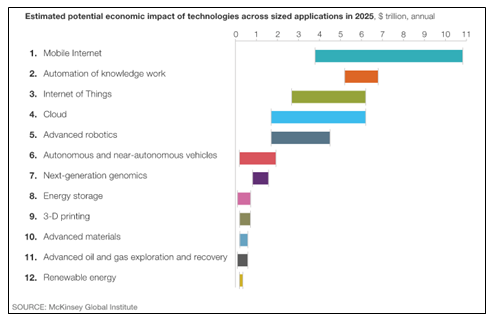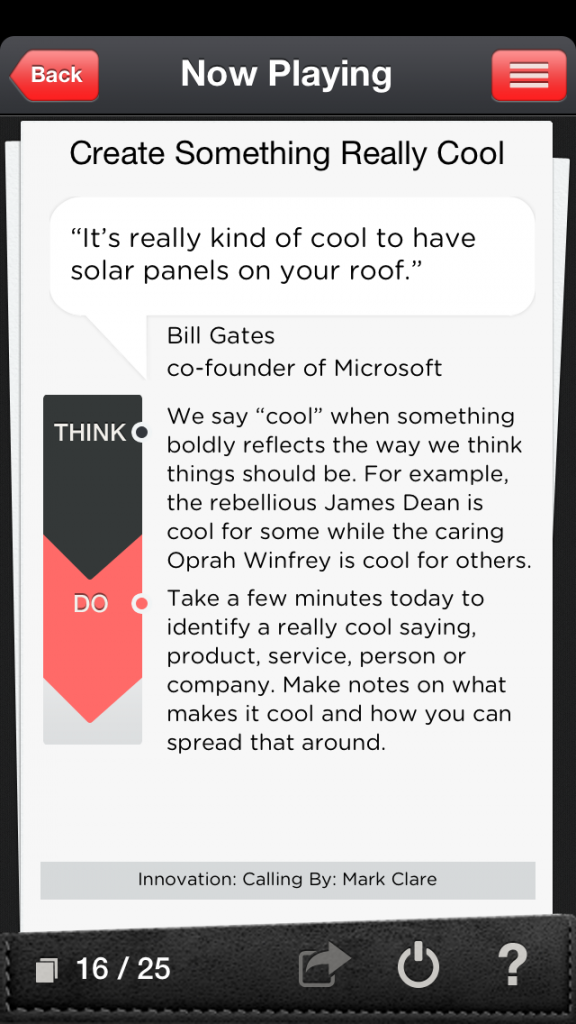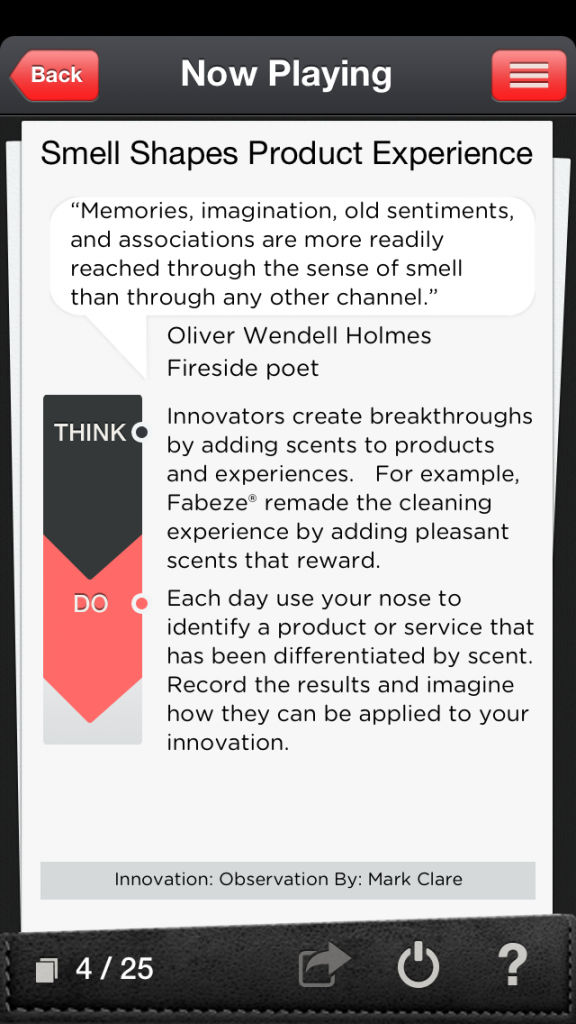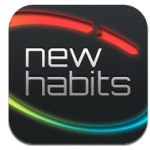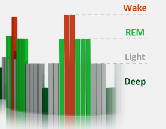How to Develop a Multi-Frame Thinking Habit
June 29th, 2013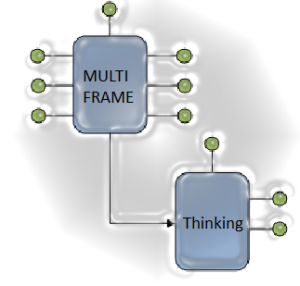 It is widely understood that rigorously thinking about a problem from multiple perspectives can give rise to creative solutions. New frames take thinking in different directions. For example, understanding a customer complaint as an opportunity to learn and innovate rather than a painful problem is a classic reframing. New frames also create the opportunity for a synthesis especially if you have a lot of them. The parable of the several blind men touching different parts of an elephant illustrates the point. Each blind man describes only part of the elephant – a long smooth tube (a tusk), a flat velvety surface (ear), a thick tree trunk (leg) and so on. It is only by synthesizing or combining these various frames that we come to understand the elephant.
It is widely understood that rigorously thinking about a problem from multiple perspectives can give rise to creative solutions. New frames take thinking in different directions. For example, understanding a customer complaint as an opportunity to learn and innovate rather than a painful problem is a classic reframing. New frames also create the opportunity for a synthesis especially if you have a lot of them. The parable of the several blind men touching different parts of an elephant illustrates the point. Each blind man describes only part of the elephant – a long smooth tube (a tusk), a flat velvety surface (ear), a thick tree trunk (leg) and so on. It is only by synthesizing or combining these various frames that we come to understand the elephant.
Despite being widely understood, few have mastered multi-frame thinking.
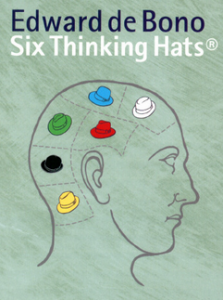 Fortunately, there are many excellent techniques for generating and combining multiple mental frames. One of my favorites is DeBono’s Six Thinking Hats. In this technique, trying on a new hat is a metaphor for generating point of view. Each hat also has a color that denotes the specific mental frame you need to adopt. For example, when you wear the white hat you focus on listing just the facts of the situation. But when you wear the red hat you focus on your feelings and intuitions about the situation including likes, dislikes, fears and other emotions. There is even a blue hat your wear to manage the overall thinking process and synthesize the multiple perspectives created from the other hats. You can use the six hats by yourself but it works better in a group. While it may seem trivial at first if you use it with discipline and rigor it can produce good results.
Fortunately, there are many excellent techniques for generating and combining multiple mental frames. One of my favorites is DeBono’s Six Thinking Hats. In this technique, trying on a new hat is a metaphor for generating point of view. Each hat also has a color that denotes the specific mental frame you need to adopt. For example, when you wear the white hat you focus on listing just the facts of the situation. But when you wear the red hat you focus on your feelings and intuitions about the situation including likes, dislikes, fears and other emotions. There is even a blue hat your wear to manage the overall thinking process and synthesize the multiple perspectives created from the other hats. You can use the six hats by yourself but it works better in a group. While it may seem trivial at first if you use it with discipline and rigor it can produce good results.
 Another proven multi-frame thinking technique is stakeholder value analysis. In this business-oriented technique you list all the parties or groups that have skin in the game and describe how they receive and contribute value to the situation. For example, employees are an important stakeholder group in a company. They contribute value through their time, effort, creativity and loyalty and they receive value in the form of a pay check, benefits, meaningful work and personal satisfaction. Seeing value in both tangible ways (time, effort, money, benefit) and intangible ways (creativity, loyalty, meaning, satisfaction) has proven very important for the modern organization. It has also helped to give voice to new perspectives about how to think about the environment and future generations as important stakeholders and the need to balance purely economic thinking with social concerns.
Another proven multi-frame thinking technique is stakeholder value analysis. In this business-oriented technique you list all the parties or groups that have skin in the game and describe how they receive and contribute value to the situation. For example, employees are an important stakeholder group in a company. They contribute value through their time, effort, creativity and loyalty and they receive value in the form of a pay check, benefits, meaningful work and personal satisfaction. Seeing value in both tangible ways (time, effort, money, benefit) and intangible ways (creativity, loyalty, meaning, satisfaction) has proven very important for the modern organization. It has also helped to give voice to new perspectives about how to think about the environment and future generations as important stakeholders and the need to balance purely economic thinking with social concerns.
General methods for multi-frame thinking include:
- Lateral and divergent thinking
- Helicopter and systemic thinking
- Structured inventive thinking
- Appreciative intelligence
- Visual sense making and metaphors.
To get good results you need to use these methods with discipline and rigor. Ideally, they will become a matter of habit. This means applying them on a regular basis until they become an automatic thinking response.
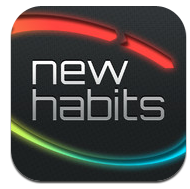 To help you develop a multi-frame thinking habit I have created a mobile learning program called NewHabits. It includes a mobile App called Reframe that covers 25 specific techniques you can apply to generate multiple perspectives on situations at home or work. Each technique is described by a knowledge card that quickly explains the concept behind the technique and recommends a specific action for using it. Cards take just a few minutes to play but trigger small bursts of learning from experience. These small steps accumulate over time into significant new skills and habits.
To help you develop a multi-frame thinking habit I have created a mobile learning program called NewHabits. It includes a mobile App called Reframe that covers 25 specific techniques you can apply to generate multiple perspectives on situations at home or work. Each technique is described by a knowledge card that quickly explains the concept behind the technique and recommends a specific action for using it. Cards take just a few minutes to play but trigger small bursts of learning from experience. These small steps accumulate over time into significant new skills and habits.






